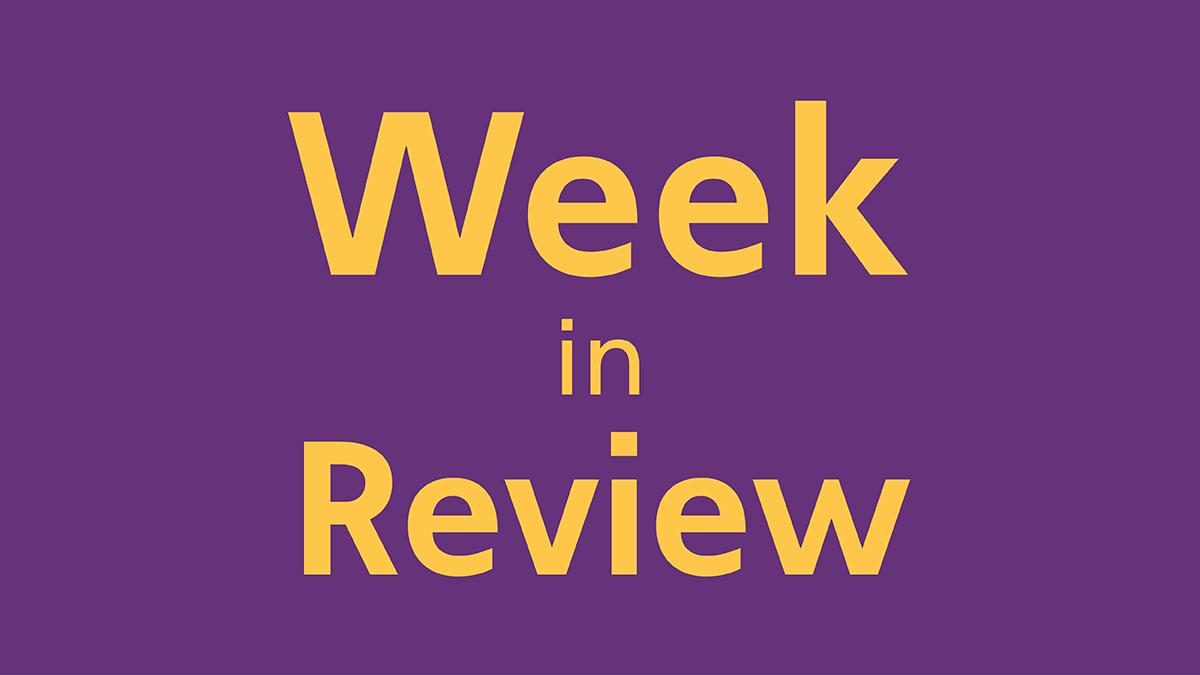Week in Review
Week 52 in Review: Business Plan Roadshow, Rabigh innovation, and 40 years of Panorama

Global December 29, 2022
Aramco CEO Amin Nasser and fellow members of corporate management share the past year’s successes and plans for the road ahead.
Here are some of the top articles over the past week.
Exceptional year celebrated, exceptional work ahead
“The Aramco Board of Directors wanted to express their appreciation for all employees, who ensured all key company KPIs were met in the year,” Aramco CEO Amin Nasser said at this year’s annual Board Roadshow.
The annual roadshow, which included visits to Riyadh, Dhahran, Abqaiq, and Tanajib, and virtual presentations to Ras Tanura, Yanbu’, and Jazan, saw the the company’s 2023-2025 business plan unveiled.
The CEO spoke on how the upcoming business plan would be unprecedented as the company works toward achieving its long-term strategy that includes work on increasing the maximum sustained capacity, expanding gas production, working toward the company’s 2050 net-zero ambition, and investing in people.
Aramco’s R&DC boosts Petro Rabigh productivity, avoids shutdowns
Aramco’s network of research and development centers has grown over the years to develop breakthrough solutions for challenges faced by our industry and by our customers.
One such breakthrough came when Aramco’s Research and Development Center in Dhahran received a request from our joint venture, Rabigh Refining & Petrochemical Co. (Petro Rabigh), to help them solve a recurring problem of polymer buildup in their plant that produces 1-Butene. Their solution — the Anti Fouling Additive (AFA™), developed jointly with Sumitomo Chemicals — has already earned seven granted patents and a number of awards, including the 2020 Innovation Award from the Board of Engineers and the CEO Excellence Award in 2018.
In 2009, when Petro Rabigh first started operations, they found that the 1-Butene reactor, as well as their associated cooling loops and heat exchangers, were experiencing a chronic buildup of polymers during the normal production process, significantly reducing production capacity.
In 2013, Aramco’s researchers at ARC KAUST launched a search for a chemical compound that could be added into the process, interrupting the buildup of polymers with no destructive effect on the process. After two years, with the help of the Fuels and Chemicals Division in Dhahran, they found the right molecule that changed the nature of the fouling polymer, reducing its molecular weight and turning dense, hardened resin-like polymers into a fluffy, nonsticky substance that could be easily removed.
“Our solution was a first of its kind,” said Motaz M. Khawaji, the AFA™ project lead and co-inventor of the AFA™ technology. “Up until the introduction of AFA™, there was no other technology solution that used additives to control polymer buildup in ethylene dimerization units.”
Finest locally made products are now available on the B2B platform
More than 20 products of Aramco’s supported micro-industries finest products, including honey, coffee, and cosmetics, are now easier to purchase with the B2B platform (business-to-business platform).
Company organizations can purchase products for the office, events, and more work engagements that showcase the Kingdom’s rich natural resources, while supporting the work of local micro-industries.
“We strive to grow this initiative by continuously exploring and identifying new geographic areas, charities, and co-ops that can use the same kind of support,” said Sara A. Al-Tamimi, director of Aramco’s Citizenship Division.
Celebrating 40 years of publishing Panorama
The first edition of Panorama appeared in 1982, published by Loss Prevention (LP) to “give a wide view of safety.” With the tagline “Spotlight on Safety,” the magazine quickly pivoted its attention to off-the-job safety with the realization that many incidents leading to medical time off work were occurring in the homes of workers and their families, on sports fields, and especially on the roads. The magazine was a way to bring safety to an entirely new audience — the families in Aramco’s communities.
This publication was a relative trailblazer in its beginnings, highlighting some significant safety issues. From its very beginnings, one of Panorama’s main goals was to involve the community as much as possible, and this was done in a variety of ways. One of these was highlighting “real life” contributions made by employees and their families whose actions, for example, helped to save a life or prevent a hazardous situation.
“It was progressive for its time,” says Haifa Alsheikh, a member of LP’s Support Services Unit (SSU) and current editor of the magazine. “If we consider where other companies were in terms of editorial production at this time, this was really a very unique publication.”
Aramco Americas facilitates geology field seminar in neighboring Oman
Geology students and faculty from King Fahd University of Petroleum and Minerals (KFUPM) and Stanford University and geologists from Aramco and Aramco Americas conducted a joint field seminar from Nov. 13 to 19 in Oman.
This field seminar included studies of the petroleum systems and related geology of Oman in a wide variety of environmental settings of various geologic ages. Oman is noteworthy for excellent exposures of modern and ancient outcrops of complex geology and reservoir analogs relevant to Aramco operations.
Facilitated by Gretchen Gillis of the Aramco Americas Upstream Technical Support Division, the group of 30 gained hands-on experience in a wide variety of geological settings while fostering ongoing collaboration between the company and the two universities.



